A focus on materiality in office design can introduce a variety of energies and moods to the workplace. It can alleviate a feeling of corporate sterility by creating diverse sensory experiences within a building. Ultimately, it can improve our wellbeing and productivity.
The use of different materials in an office design can help organisations advance individuality and brand identity; shaping workspaces that reject old notions of the primacy of uniformity and a single design 'vision' dictated from above.
As James Ludwig, Steelcase Vice President of design has remarked:
“People want to feel a connection to the places where they work, where they can see themselves in the space, versus something that feels imposed upon them.”
Materiality and authenticity in office design
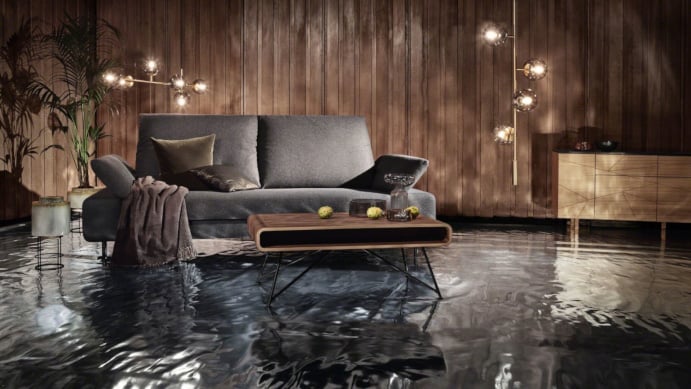
A mixture of surfaces, a mismatch of colours and textures can create more comfortable, authentic and psychologically manageable spaces than a typical, upscale, corporate working environment.
It can evoke the spirit of the start-up, the self-directing, organically organised team spaces where creativity and innovation can more easily flow.
A combination of soft furnishing choices and surfaces that can be decorated with workers own pictures and mementos can build more human and humane offices. Spaces that feel inhabited, rather than simply occupied.
Indeed, scientists in the Journal of Environmental Psychology have published research showing that personalisation of this kind, can contribute to employees’ positive cognitive and emotional wellbeing, leading to enhanced thinking and better office coping skills.
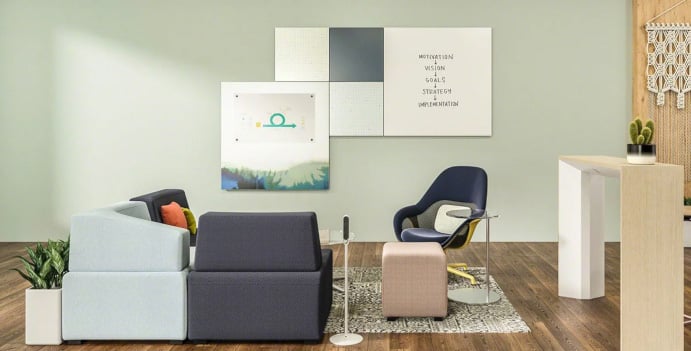
An ecosystem of materials
At the same time, supporting a mixture of materiality approaches throughout an ecosystem of connected workspaces, can help us switch between different kinds of work mode.
From brightly lit, clean lined, uncluttered spaces which might support highly focused, critical thinking activities, to relaxing, loungelike areas where sociable, collaborative work efforts can be foregrounded.
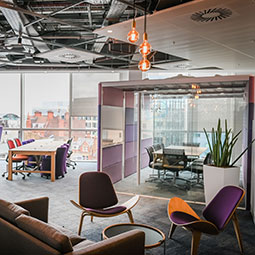
The pace, style and quality of working can be profoundly affected by the nature of the surfaces we see and feel around us. Materiality can affect the quality of light and acoustics within a workspace. It can impact our ability to see and hear other people properly, as well as focus on the devices essential to our labour.
The specific materials used to furnish, screen off, encase and upholster office pods, booths and workstations impact our ability to control glare and block out unwanted light or noise. This can be a huge factor in allowing us to concentrate on changing tasks throughout the day and the quality of our work experience and our outputs.
Biophilic design; bring the outside in
Biophilic design, the use of natural and living materials to decorate and furnish our workspaces, has also been shown to have an astonishing effect on the quality of our working lives, our productivity and wellbeing.
There is an abundance of evidence that nature and the outdoors exerts a powerful rejuvenating influence on the human mind; our ability to relax, recharge and concentrate on fresh stimulus. The work of envrionmental psychologists Rachel and Stephen Kaplan, for example, identifies the ‘effortless mindfulness’ that emerges when humans interact with nature.
For large number of office workers right now, however, there is a real issue around access to the rejuvenating influence of the outside world. According to Interface's Human Spaces Global Report, 42% of office workers have no access to natural light, 55% have no greenery and 7% lack even a window within their immediate working environment.
Biophilic design seeks to redress this balance and harness the abilities of natural and living materials to destress and refocus individuals as they go about their working days.
Living walls can provide high quality, natural acoustic barriers while powerfully evoking lush, verdant landscapes, with their connotations of space, healthfulness and mental liberation.
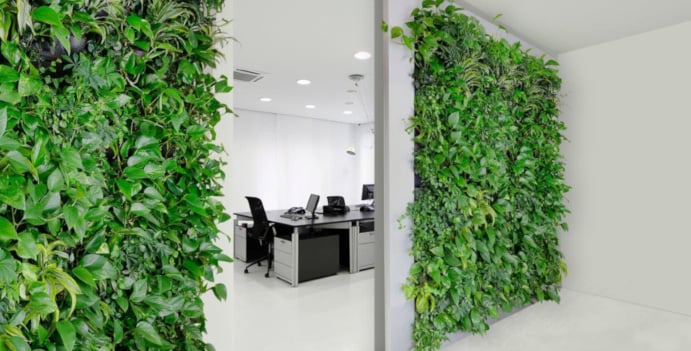
Water features are well known to counter rising levels of stress and can be a useful way to ‘bring the outdoors in’, while making striking design statements.
A mixture of living and organic materials, finished and unfinished wood textures, mosses, grasses and plants can all be utilised in innovative ways to bring different kinds of energy into workspaces.
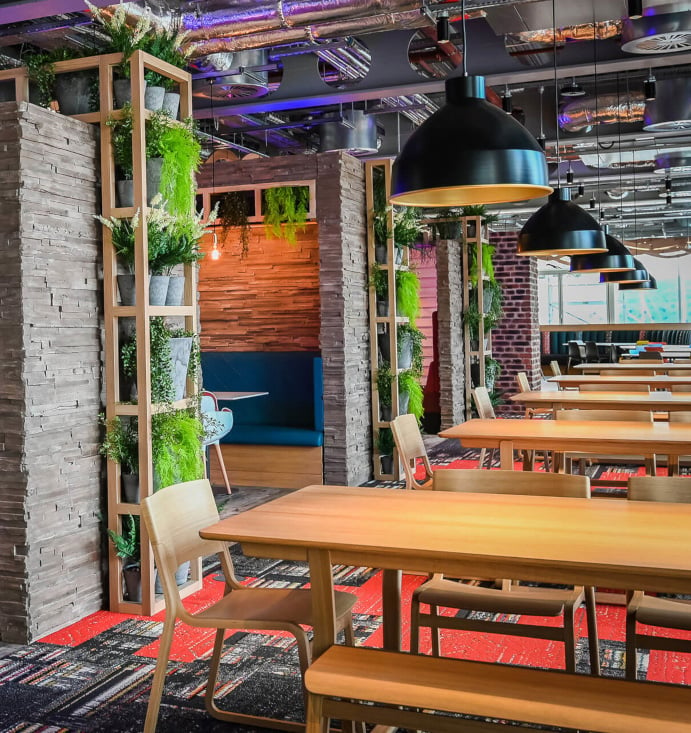
Steelcase research has shown how exchanging the artificial sheens, glosses and rig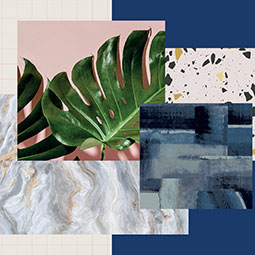 idity of traditional office furnishing with the natural textures, irregularity and curls of materials drawn from nature, can help prevent fatigue around tasks that demand high concentration.
idity of traditional office furnishing with the natural textures, irregularity and curls of materials drawn from nature, can help prevent fatigue around tasks that demand high concentration.
Responsive textiles
But there is another trend in materiality that is further demonstrating the influence it can exert on us. Designers are exploring cutting edge technology that can make surfaces themselves agents for health and wellbeing.
‘Responsive textiles’ made from Celliant (a fibre embedded with 13 safe, naturally occurring minerals) and used for upholstering have been shown in clinical tests to increase blood flow by opening up capillaries, promoting greater oxygen flow to cells and improving bodily thermoregulation.
Now approved by the FDA in the US, we are likely to see more of this technology being introduced into furnishing to increase the comfort and safety of traditionally desk bound office workers.
Living in a material world
Materiality breeds content in the office in myriad ways. Far from being an unscientific discipline or an entirely aesthetic concern, the selection and juxtaposition of materials in a workplace can bring measurable health benefits to workers.
This new understanding of the influence of materials on our moods, engagement and wellbeing is being increasingly explored by researchers and harnessed by designers.









